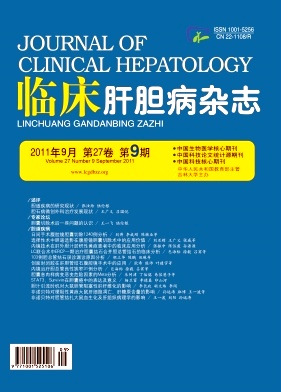|
[1]Li NF, Kocher HM, Salako MA, et al.A novel function ofcolony stimulating factor 1 receptor in hTERT immortalizationof human epithelialcells[J].Oncogene, 2009, 28 (5) :773-780.
|
|
[2]Cassar L, Nicholls C, Pinto AR, et al.Bone morphogeneticprotein 7 induces telomerase inhibition, telomerase shorten-ing, breast cancer cell senescence, and death via smad3[J].FASEB J, 2009, 23 (6) :1880-1892.
|
|
[3]Choi J, Min N, Park J, et al.TSA-induced DNMT1 downregulation represses Htert expression viarecruiting CTCF intodemethylated core promoter region of hTERT in HCT116[J].Biochem Biophys Res Commun, 2010, 391 (1) :449-454.
|
|
[4]Verdel A, Vavasseur A, Le Gorrec M, et al.Common themes insiRNA-mediated epigenetic silencing pathways[J].Int J DevBiol, 2009, 53:245-257.
|
|
[5]Horikawa I, Barrett JC.Cis-Activation of the human telom-erase gene (hTERT) by the hepatitis B virus genome[J].JNatl Caneer Inst, 2001, 93 (15) :1171-1173.
|
|
[6]Hua L, Wei S, Fang L, et al.Hepatitis B virus X protein up-regulates transcriptional activation of human telomerase re-verse transcriptase[J].Virus Genes, 2010, 40:174-182.
|
|
[7]Hua Liu, Fang Luan, Ying Ju, et al.In vitro transfection ofthe hepatitis B virus PreS2 gene into the human hepatocarci-nomacellline HepG2 induces upregulation of human telomer-ase reverse transcriptase[J].Biochem Biophys Res Com-mun, 2007, 355 (2) :379-384.
|
|
[8]Straat K, Liu C, Rahbar A, et al.Activation of telomerase byhuman cytomegalovirus[J].J Natl Cancer Inst, 2009, 101 (7) :488-497.
|
|
[9]VermaSC, Borah S, Robertson ES.Latency-associated nu-clear antigen of kaposi sarcoma-associated herpesvirus up-regulates transcription of human telomerase reverse tran-scriptase promoter through interaction with transcription fac-tor SP1[J].J virol, 2004, 78 (19) :1641-1645.
|
|
[10]Zimmermann H, Degenkolbe R, Bernard HU, et al.Down-regulate p53 activity by targeting the transcriptional coactiva-tor CBP/p300[J].Virology, 1999, 73 (8) :6209-6219.
|
|
[11]Wang J, Xie LY, Allan S, et al.Myc activates telomerase[J].Genes Dev.1998, 12:1769-1774.
|
|
[12]Stephen T, Oh S, LaimonisaL.Telomerase activation by hu-man papillomavirus type 16 E6 protein:induction of humantelomerase reverse treanscriptase expression through Mycand GC-rich Spl binding sites[J].Virology, 2001, 75 (12) :5559-5566.
|
|
[13]陈颖, 孔庆忠.端粒酶逆转录酶和P53在大鼠肝癌发生中的动态变化[J].世界华人消化杂志, 2009, 17 (15) :1493-1497.
|
|
[14]Dong J, Wang L, Tian YP, et al.hTERT single nucleotidepolymorphism is associated with increased risks of hepato-cellular carcinomaand tumor metastasis[J].Nan Fang Yi KeDa Xue Xue Bao, 2011, 31 (1) :49-52.
|
|
[15]Kong SY, Park JW, Kim JO, et al.Alpha-fetoprotein andhuman telomerase reverse transcriptase mRNA levels in pe-ripheral blood of patients with hepatocellular carcinoma[J].JCancer Res Clin Oncol, 2009, 135 (8) :1091-1098.
|
|
[16]Daskalow K, Pfander D, Weichert W, et al.Distinct tempo-rospatial expression patterns of glycolysis-related proteins inhuman hepatocellular carcinoma[J].Histochem Cell Biol, 2009, 132:21-31.
|
|
[17]Li H, Wang XL, Yang Y, et al.Inhibitory effect of RNAi tar-geting human telomerase reverse transcriptase against hu-man hepatocellular carcinoma cells[J].Nan Fang Yi Ke DaXue Xue Bao, 2008, 28 (8) :1323-1326.
|
|
[18]Guo X, Wang W, Zhou F, et al.siRNA-mediated inhibitionof hTERT enhances chemosensitivity of hepatocellular carci-noma[J].Cancer Biol Ther, 2008, 7 (10) , 1555-1560.
|
|
[19]Kamradt MC, Lu M, Werner ME, et al.The small heat shockprotein alphaB-crystallin is anovel inhibitor of TRAIL-inducedapoptosis that suppresses the activation of caspase-3[J].JBiol Chem, 2005, 280:11059-11066.
|
|
[20]Zhang RG, Zhao JJ, Yang LQ, et al.RNA interference-me-diated hTERT inhibition enhances TRAIL-induced apoptosisin resistant hepatocellular carcinoma cells[J].Oncol Rep, 2010, 23 (4) :1013-1019.
|
|
[21]Hu Y, Shen Y, Ji B, et al.Combinational RNAi gene therapyof hepatocellular carcinoma by targeting human EGFR andTERT[J].Eur J Pharm Sci, 2011, 42 (4) :387-391.
|
|
[22]Miura N, Sato R, Tsukamoto T, et al.A noncoding RNAgene on chromosome 10p15.3 may function upstream ofhTERT[J].BMC Mol Biol, 2009, 10:5.
|
|
[23]Su XL, Wen SS, Ying LC, et al.Antisense oligonucleotidetargeting at the initiator of hTERT arrests growth of hepatomacells[J].World J Gastroenterol, 2004, 10 (3) :366-370.
|
|
[24]Lin RX, Tuo CW, L櫣QJ, et al.Inhibition of tumor growthand metastasis with antisense oligonucleotides (Cantide) tar-geting hTERT in an in situ human hepatocellular carcinomamodel[J].Acta Pharmacol Sin, 2005, 26 (6) :762-768.
|
|
[25]Yang Y, Lv QJ, Du QY, et al.Combined effects of Cantideand chemotherapeutic drugs on inhibition of tumor cells’growth in vitro and in vivo[J].World J Gastroenterol.2005, 28, 11 (16) :2491-2496.
|
|
[26]Song MS, Jeong JS, Ban G, et al.Validation of tissue-specific promoter-driven tumor-targeting trans-splicingribozyme system as a multifunctional cancer gene therapydevice in vivo[J].Cancer Gene Ther, 2009, 16 (2) :113-125.
|
|
[27]Song J, Kim C, Ochoa ER.Sleeping Beauty-mediated sui-cide gene therapy of hepatocellular carcinoma[J].BiosciBiotechnol Biochem, 2009, 73 (1) :165-168.
|
|
[28]刘燕, 邓志华, 杨长青, 等.重组腺病毒Ad-hTERTp-HSV-TK载体的构建及抗肝癌实验研究[J].肿瘤研究与临床, 2009, 2l (1) :4-6.
|
|
[29]刘燕, 邓志华, 杨长青, 等.重组腺病毒Ad-hTERTp-HSV-TK/GCV系统的构建及其对人肝癌细胞HepG2的杀伤作用及旁观者效应研究[J].中国癌症杂志, 2009, 19 (1) :29-32.
|













 DownLoad:
DownLoad: